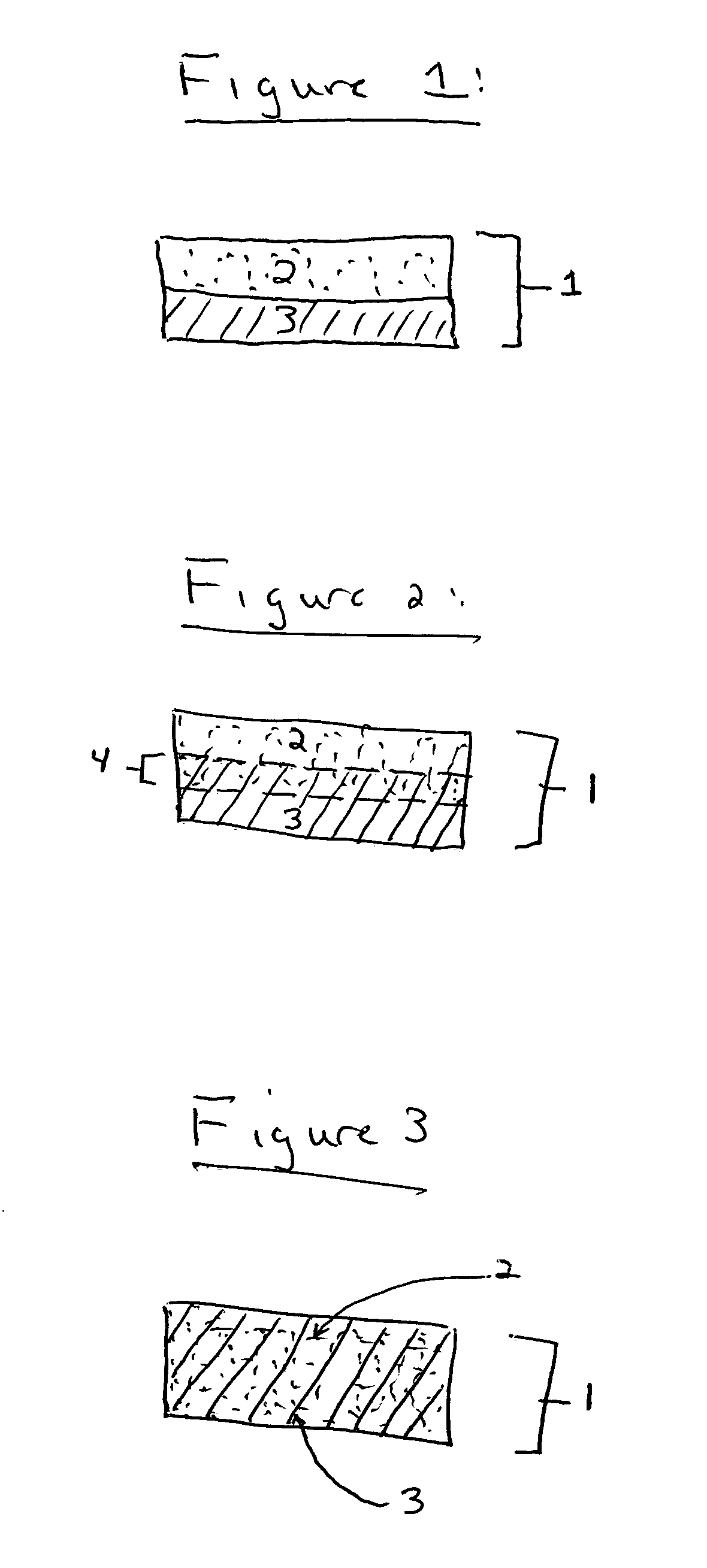Insulation paper facing containing an antimicotic or fungicide and methods of making and using the same
- Summary
- Abstract
- Description
- Claims
- Application Information
AI Technical Summary
Benefits of technology
Problems solved by technology
Method used
Image
Examples
example 1
[0090] A paper facing paper substrate was made by pre-mixing 100 ppm of an active ingredient (4,5-dichloro-2-n-octyl-4-isothiazolin-3-one) based upon dry weight tons with cellulose fibers during the paper making process.
[0091] The antimicrobial tendency of the paper substrate was tested using ASTM methods D 2020A. The results demonstrated that the paper substrate was resistant to Aspergillus niger, Aspergillus terreus, and Chaetomium globosum after two (2 weeks) by demonstrating no growth of such organisms and / or any other organisms during such time.
[0092] The antimicrobial tendency of the paper substrate was tested using ASTM C-1338-00. The results demonstrated that the paper substrate was resistant to Aspergillus niger, Aspergillus versicolor, Chaetomium globosum, Penicillium funiculosum, and Aspergillus flavus after 7 days by demonstrating no growth of such organisms and / or any other organisms during such time.
[0093] The antimicrobial tendency of the paper substrate was tested...
example 2
[0094] A paper facing was made by adding standard asphalt to the paper facing paper substrate of Example 1. Then, the resultant paper facing was heated and fiberglass was applied thereto so as to simulate the process of making a paper facing insulation containing the paper substrate of Example 1, asphalt and fiberglass insulation. Both standard asphalt and asphalt treated with an antimicrobial compound as utilized in separate embodiments. The paper facings were tested using ASTM methods D 2020A and G 21-96.
[0095] After 7 days the paper facing of Example 2 containing standard asphalt had no growth on either the paper substrate and / or the asphalt as measured according to both the D 2020A and G 21-96 tests. After 14 days, the paper facing of Example 2 containing standard asphalt had no growth on the paper substrate according to the D 2020A test, but had heavy growth on the asphalt according to this test. After 14 days, the paper facing of Example 2 containing standard asphalt had slig...
PUM
| Property | Measurement | Unit |
|---|---|---|
| Fraction | aaaaa | aaaaa |
| Fraction | aaaaa | aaaaa |
| Fraction | aaaaa | aaaaa |
Abstract
Description
Claims
Application Information
 Login to View More
Login to View More - R&D
- Intellectual Property
- Life Sciences
- Materials
- Tech Scout
- Unparalleled Data Quality
- Higher Quality Content
- 60% Fewer Hallucinations
Browse by: Latest US Patents, China's latest patents, Technical Efficacy Thesaurus, Application Domain, Technology Topic, Popular Technical Reports.
© 2025 PatSnap. All rights reserved.Legal|Privacy policy|Modern Slavery Act Transparency Statement|Sitemap|About US| Contact US: help@patsnap.com

